We held our BioBlitz on 2nd June, and were very lucky with the weather, a beautiful sunny day among a run of indifferent ones which helped make an all-round great day.
We had between 50-100 visitors, who got involved in the species hunt or just enjoyed talking to our specialists and examining the many nature exhibits that were being shown – small animal skulls (not as gruesome as it sounds), antlers, fungi and much more. We would have loved to have had more visitors, but those that came were very interested and enthusiastic.
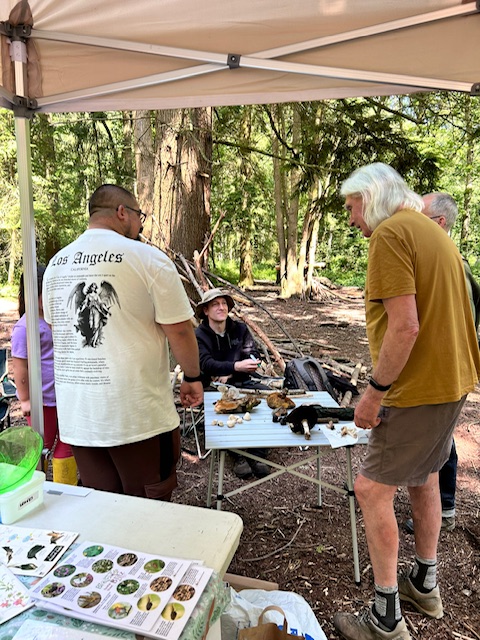
Moths from the overnight traps, kept in a cool box, were a particular source of interest.
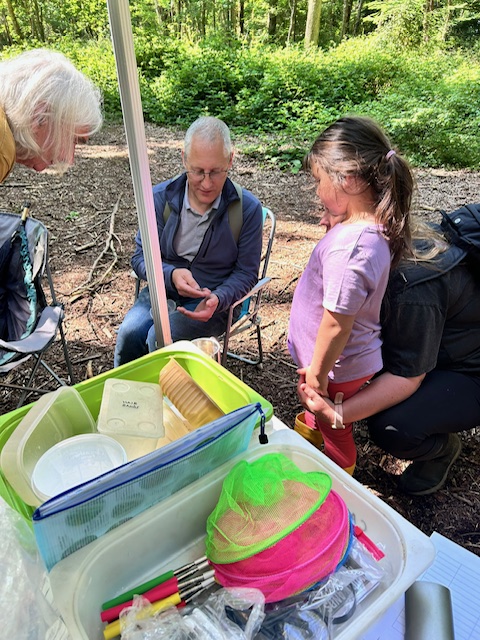
Wildlife quest sheets were in great demand among the younger families, with reward stickers being handed out for successful finds. Pond dipping was a great success, an opportunity for the kids to get “down and dirty”.
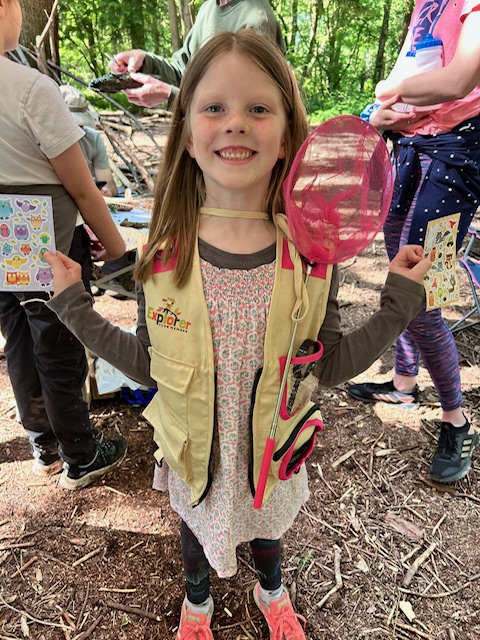
Visitors could see what had already been found on our “discovery” board
Search, identify, record!
To assist in the search, we recommended our seekers to use iNaturalist, an app that has identification and recording built-in making it particularly suitable for a BioBlitz. We were intending to use this alongside paper recording, but the use of the app was embraced so thoroughly that we decided the paper version was just not needed. Observations by our specialists that didn’t have an accompanying photo (for example, birds) had iNaturalist entries created manually. We relied on our specialists to get them right!
So what did we find?
In total we recorded 219 species, in these categories;
Insecta = 86
Plantae = 77
Aves = 31 (Birds)
Mammalia = 7
Fungi = 6
Arachnida = 4
Amphibia = 3
Arthropoda = 2
Mollusca = 1
Protozoa = 1
which can be viewed on the iNaturalist project page here, and where the BioBlitz results can be further explored. Click on “Stats” to see the breakdown by category.
Here are a few pictures taken on the day:
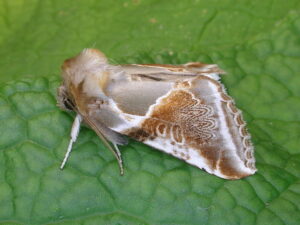
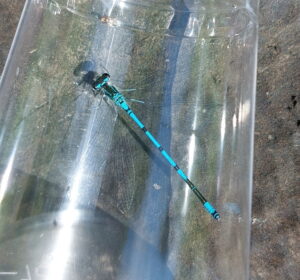
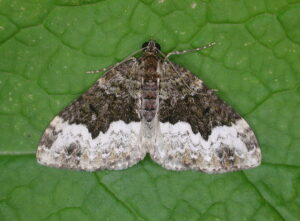
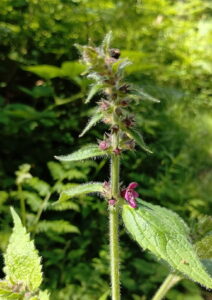
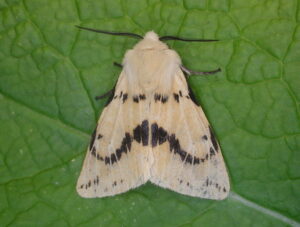
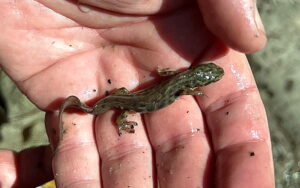
How did this compare with the BioBlitz in 2014?
The number of species was almost identical – 219 in 2024, 220 in 2014 – however, the make-up was significantly different.
(In order to compare the two years, we had to regroup the species. iNaturalist groups the species into taxonomic classes, whereas the 2014 BioBlitz used WWT groupings.)
| 2024 BioBlitz totals | 2014 BioBlitz totals |
| (2014 groupings) | |
| WWT Plants = 77 | WWT Plants = 103 |
| WWT Invertebrates = 36 | WWT Invertebrates = 66 |
| WWT Birds = 31 | WWT Birds = 27 |
| WWT Fungi = 6 | WWT Fungi = 17 |
| WWT Mammalia = 7 | WWT Mammalia = 3 |
| WWT Amphibia = 3 | WWT Amphibia = 2 |
| WWT Lepidoptera = 57 | WWT Lepidoptera = 1 |
| WWT Other = 1 | WWT Other = 1 |
| Total 219 | Total 220 |
We recorded less plants and invertebrates, and far more butterflies and moths this year, and this is probably down to a combination of the 2014 event being held nearly two months earlier, in April, and the expertise present on the day. The 2014 event was carried out by Warwickshire Wildlife Trust and while information on who was present is not available, it would seem clear that there was no moth trapping done, and likely members of the Warwickshire Flora and other groups present to identify more plants and invertebrates. Some spring species that were present in 2014 were unsurprisingly absent this time.
The fungi count was disappointing. It’s not a good time of the year for fungi anyway; we would expect to find a lot more later in the year. The change in the nature of the wood over the last 10 years from dark and bare in places to open with more undergrowth has undoubtedly not been good for mushrooms, perhaps the one loser in the reshaping of the wood.
Our moth trappers said that Oakley Wood is a very good place, and the figures speak for themselves. Only 3 butterflies were recorded, though, similar to 2014. However, June is know to be a poor time for butterflies (the “June gap”) so this isn’t unexpected.
So has the wood become a better place for nature over the 10 years since 2014? It’s not really possible to draw any conclusions from these results, but let’s face it, there’s no good reason to think it hasn’t.
What next?
A BioBlitz only gives a snapshot of species over a short period of time, typically a day. It would be interesting to see what species can be found for a longer period, say, for a year. We used iNaturalist for the BioBlitz for its identification and recording ability, and it’s also good for encouraging citizen science. Observations using this app can be made at any time, and the record stored away in the iNaturalist database, adding to those from the BioBlitz. An analysis at the end of the year will give us a better view of the species that exist in the wood.
So, please keep using the iNaturalist app whenever you visit the wood, and record anything of interest you see. At the end of the year, we’ll take a look at what we’ve got for 2024.
Keep recording!
Chris

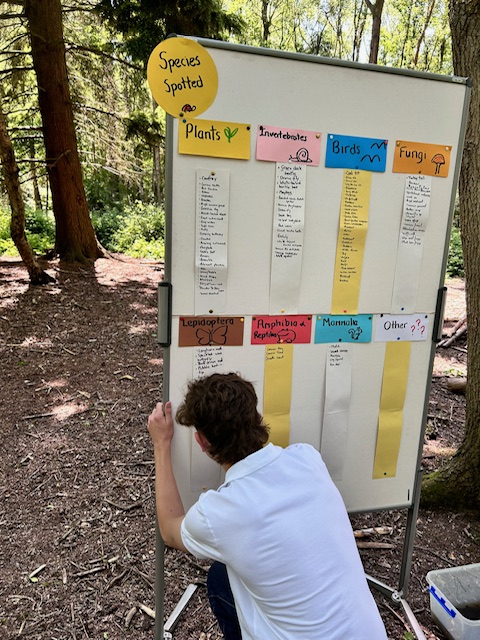
Thank you Chris for such a thorough,interesting analysis
A fascinating study – many thanks. Are the Wildlife Quest sheets still available to download anywhere? Liz
I think we used ones from the Internet but I can’t remember from where. I’ll have to ask Susan, our media guru who produced them.